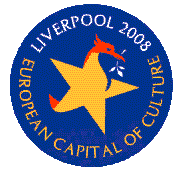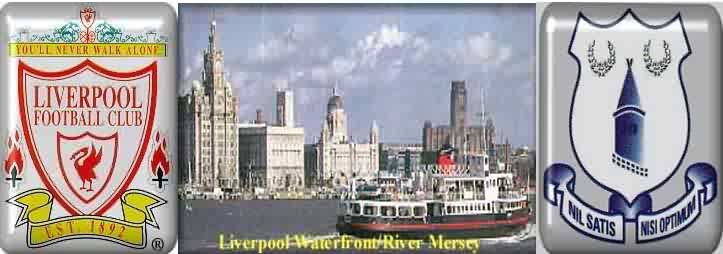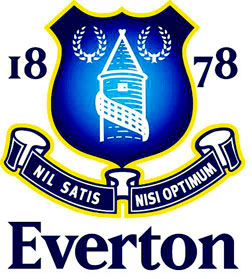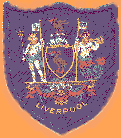
 |
![]()

![]()
For A Vitual Tour Of Liverpool Town Center Click Above
![]()
 |
|
800th Anniversary |
 |
![]()
Info Supplied by Dave from Liverpool.
 |
 |
 |
![]()
 |
 |
![]()
| Visitors to Liverpool are assured a warm welcome to any of the following Orange, Social Clubs. |
![]()
|
Bootle Provincial Club University Road Bootle. |
![]()
|
Liverpool Provincial Club Everton Road, Anfield, Liverpool 6. |
![]()
|
The New Derry Social Club Mere Lane, Everton, Liverpool 5. |
![]()
|
Southern Area Memorial Hall Mill Street, Dingle, Liverpool 8. |
![]()
|
Victoria Memorial Hall Club Church Road, Garston, Liverpool 19. |
![]()

![]()
For A Vitual Tour Of Liverpool Town Center Click Above
 |
LIVERPOOL |  |
|
The year 2007 marks the 800th anniversary of the founding of Liverpool by King John. From hesitant mediaeval beginnings as a planned town, Liverpool rose to become a great seaport, the proud second city of empire. Over the past few years Liverpool has undergone a second renaissance: its magnificent waterfront architecture has been awarded UNESCO World Heritage status and the city is revelling in its newly-acquired standing as European Capital of Culture in 2008. Slaves, tobacco, sugar and cotton all helped to make Liverpool one of the world's major trading centres in the 18th and 19th centuries. Albert Dock, opened in 1846, was once a treasure house of precious cargoes from all over the world; today it is the home of the Merseyside Maritime Museum and the Tate Gallery Liverpool. The imposing Edwardian Royal Liver and Cunard buildings reflect Liverpool's past greatness, as does the superb Greek Revival St George's Hall, where the stunning small concert room will re-open for the first time in more than a generation. Throughout the centuries Liverpool has benefited from an abundance of artistic patronage: the Walker Art Gallery opened in 1877 with an endowment from a local alderman and the Lady Lever was founded 50 years later by the first Lord Leverhulme. Between them these galleries host the country's largest collection of Pre-Raphaelites, one of Europe's finest gatherings of fine and decorative art, not to mention work by the likes of Rembrandt, Poussin and Degas. Liverpool's Hope Street must
rank as one of Britain's most extraordinary thoroughfares: at one
end lies the funnel-like Metropolitan Cathedral; at the other, Giles
Gilbert Scott's Gothic Revival Anglican Cathedral, the country's largest
church and the fifth largest in the world. We will also take in the
Unitarian Church in Ullet Road with its superb metalwork and stained
glass by William Morris. City, seaport, and metropolitan borough in Merseyside, northwest England; population (1991) 481,800. Liverpool is the UK's chief Atlantic port with miles of specialized, mechanized quays on the River Mersey, and 2,100 ha/5,187 acres of dockland. The port handles 27.8 million tonnes/28.25 million tons of cargo annually. Imports include crude oil, grain, ores, edible oils, timber, and containers. There are ferries to Ireland and the Isle of Man. Traditional industries, such as ship-repairing, have declined. Present-day industries include flour-milling, sugar refining, electrical engineering, food processing, and tanning; products include chemicals, soap, margarine, and motor vehicles. There are industrial estates at Aintree, Kirkby, and Speke. A rail tunnel, and Queensway Tunnel (1934) link Liverpool and Birkenhead; Kingsway Tunnel (1971), also known as the Mersey Tunnel, links Liverpool and Wallasey. Features Landmarks include the Bluecoat Chambers(1717); the Town Hall (1754); St George's Hall (1838-54), a good example of classical architecture; the Brown Library and Museum (1860); the Picton Library (1879); the Anglican Cathedral, designed by George Gilbert Scott (begun 1904, completed 1980); the Roman Catholic Metropolitan Cathedral of Christ the King, designed by Frederick Gibberd, consecrated in 1967; and the Tate Gallery in the north in the former Albert Dock (now restored as a shopping and leisure area), opened in 1987. The Walker Art Gallery (1877) and the Liverpool Philharmonic Orchestra, (founded in 1840, the Royal LPO since 1957), are here. The Grand National steeplechase takes place at Aintree. Outstanding buildings include the 16th - century Speke Hall, the Victoria Building of the University of Liverpool, the Dock Offices, the Port of Liverpool building (1907), Royal Liver Building (1911), and the Cunard Building (1916) on Pier Head. In the Canning Conservation Area, 600 Georgian and Victorian houses are being restored. The Central Libraries (a conglomerate of several libraries) constitute one of the best public libraries in the country; the Picton Library (1879) for the humanities is a 19th-century building. There are two universities: the University of Liverpool (opened in 1903) and John Moores University. Britain's first International Garden Festival was held here in 1984. The Beatles were born here. The Liverpool Institute for the Performing Arts, set up by former Beatle Paul McCartney and opened in 1995, occupies the old Liverpool Institute for Boys, where Paul McCartney and George Harrison went to school. It offers a bachelor's degree in the performing arts. History Liverpool grew in importance during the 18th century as a centre of the slave trade, and until the early 20th century through the export of the textiles from Lancashire and Yorkshire. Middle Ages Liverpool became a county borough in 1207, and from its beginnings as a port it was associated with the transport of soldiers and military supplies to Ireland, and with general trade. The original port was probably a sheltered creek, the `Pool´, long since filled in, and the original town was small, clustered around the church of St Nicholas (still surviving through many rebuildings and restorations) and a former castle. Although by 1445 Liverpool's trade was injuring the prosperity of Chester as a port, it remained small, and even the church was within the parish of Walton until 1699. 17th-19th centuries Liverpool developed under Charles II (1630- 85) with the developing trade with America and the West Indies, and became the chief centre of the slave trade. Its growth was observed by various travellers, including Gibson in 1695 who related `the vast growth of this town in recent years´ to the trade with Ireland and the West Indies, and also to the development of the manufacturing industry. Even so, in 1668 it was a town of only seven streets though a map by Chadwick in 1725 shows some 37. In 1715 the `Old Dock´ was opened, on the site of the Custom House. This dock was condemned as unsafe in 1811 and was filled up in 1826. During the 18th century Liverpool grew rapidly. Daniel Defoe, in 1725, found it at least equal to Bristol in `the trade to Virginia and the English Island Colonies in America´, and notes that there was considerable trade with Norwegian and Baltic ports as well as with Hamburg and the ports of the Low Countries. The port of Liverpool had long since eclipsed Chester in importance, and the area surrounding was also growing in importance, with industrial areas to the north (including the Cheshire salt deposits), the textile areas of the Pennines and their fringes, and the metallurgical areas of the Midlands. The position of Liverpool was strengthened by the building of canals to the River Mersey, including the Sankey Canal from St Helens (1757), the Bridgewater from Manchester to Runcorn (1773), the Trent and Mersey (1777), and the Leeds and Liverpool (which reached Wigan in 1774 but Liverpool only in 1816). The Mersey was navigable to Warrington by 1700, but the Mersey and Irwell navigation system to Manchester was not completed until 1720. Road transport was less satisfactory; the first stage- coach reached Liverpool from London only in 1765 although turnpikes were added later. Like other British cities that were growing rapidly in the 18th century and afterwards, Liverpool presented an aspect of prosperity and elegance in its main streets but poorer housing was abundant in less obvious areas, though in time these areas swamped many of the elegant residential quarters. Meanwhile the dock area was expanding, at first from 1715 to 1797 when several docks south of the Pier Head were built. The Pier Head is the great river focus of Liverpool, for here the Mersey narrows to a mere 915 m/3,000 ft. To Pier Head came the ferries, the tramway, and later bus services, as well as a station on the Mersey railway, giving convenient transport to all parts of the city. Docks were built north of Pier Head from 1821, eventually extending for 11 km/7 mi. In 1893 the overhead railway was built, providing transport for the vast number of people working on ships and in the many warehouses and factories of the dock belt; it was closed in 1956. By the time of the 1801 census, Liverpool, with 78,000 inhabitants, was larger than Bristol with 64,000. The city grew throughout the 19th century continued and by 1901 its population was 704,134. The 20th century A major problem in Liverpool between World War I and II was its housing, for the population had increased to 856,072 in 1931. During the inter-war years, the Queen's Drive wascompleted as an outer circular road, and beside it a number of large local authority housing estates were built. From 1931 to 1951 the population declined to 780,835, with a further decline to 745,750 by 1961. Slum clearance in the city centre reduced the population there. When a survey was made of housing in the 1950s it was estimated that two fifths of the city's dwellings were below acceptable standards. People began to move to places beyond the perimeter of the city, such as Kirkby and Huyton -with-Roby; this process had in fact begun in central wards as early as the 1840s when houses were cleared for new roads, factories, and public buildings. Industries Much of Liverpool's industry was concerned with imported raw materials: timber, flour and grain, chemicals, rubber, leather, foodstuffs, and animal feed. The Leeds and Liverpool Canal, no longer used commercially, was an important route for the raw materials. Railways were also built to carry raw materials from the docks to factory areas scattered through Liverpool. Modern industries, especially in engineering, chemicals, and rubber, are located on outlying estates at Kirkby and Speke, with the addition of the motor industry at Halewood, east of Speke. Landmarks and layout Liverpool lacks the medieval grandeur of Bristol, but despite constant rebuilding much survives from the 18th century, though it is difficult to visualize the elegant town that existed on the sandstone hill now crowned by the city's two cathedrals. Some streets that were originally residential, for example Renshaw Street, became commercial, but Rodney Street, built from 1782, has some elegant houses including one of 1796, and is rather more ornate than its neighbours; the Victorian prime minister W E Gladstone was born here. Various churches were built in the18th century, but many have been demolished. One building of special interest is the former Bluecoat School of 1716 -17, a brick building known as Bluecoat Chambers, and used as a cultural centre. The municipal centre of Liverpool is adjacent to its shopping centre, and between these two and Pier Head lies the office quarter. This area contains the 18th-century town hall and many other major buildings including the Exchange, built in 1863 - 67. Best known of all the office buildings, perhaps, are those on the waterfront beside the Pier Head: the Royal Liver Building of 1910 topped by the liver bird (a legendary creature regarded by some as romantically expressing the spirit of Liverpool); the Cunard building (1913); and the Mersey Docks and Harbour Board building of 1907, with a copper dome. The historic waterfront is now a major tourist attraction; the Albert Dock includes the Merseyside Maritime Museum, and the Beatles story, as well as the Tate Gallery of the North. Liverpool has also been nominated for the European Capital of Culture for 2008. The cathedrals From the river, the skyline of Liverpool is dominated by its cathedrals. The Anglican cathedral is Gothic in inspiration. The Roman Catholic metropolitan cathedral consists of a circular nave formed by 16 reinforced concrete columns and buttresses supporting a conical roof with a lantern tower 21 m/69 ft high over the central high altar. Beneath the cathedral there is the crypt of the earlier building, designed by Sir Edwin Lutyens as a vast Romanesque structure. After World War II his plans had to be abandoned as economically unviable. Thanks to Dave from Liverpool for the above information. |